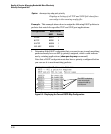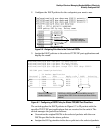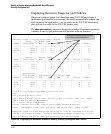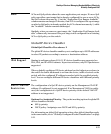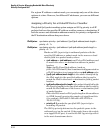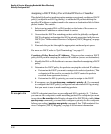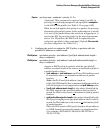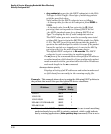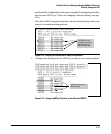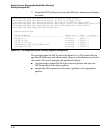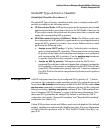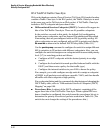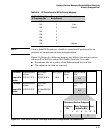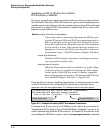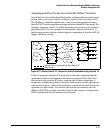
Quality of Service: Managing Bandwidth More Effectively
Globally-Configured QoS
• dscp codepoint overwrites the DSCP codepoint in the IPv4
ToS byte or IPv6 Traffic Class byte of matching packets
with the specified value.
Valid values for the DSCP codepoint are as follows:
- A binary value for the six-bit codepoint from 000000 to
111111.
- A decimal value from 0 (low priority) to 63 (high
priority) that corresponds to a binary DSCP bit set
-An ASCII standard name for a binary DSCP bit set
Type ? to display the list of valid codepoint entries.
The DSCP value you enter must be currently associated
with an 802.1p priority in the DSCP Policy table (see Table
6-10). The 802.1p priority and determines the packet’s
queue in the outbound port to which it is sent. If the packet
leaves the switch on a tagged port, it carries the 802.1p
priority with it to the next downstream device.
The default DSCP codepoint is No-override. The DSCP
codepoint is not overwritten in matching packets.
The no form of the command deletes the specified IP address
or subnet mask as a QoS classifier. If you configured a subnet
mask as match criteria, you must enter the entire IP address
and mask-length in the no command.
show qos device-priority
Displays a listing of all IP addresses and subnet masks used
as QoS classifiers currently in the running-config file.
Example. This example shows how to assign the following DSCP policies to
the packets that match the specified global IP-device classifiers:
IP Address
DSCP Policy
DSCP
Codepoint
802.1p
Priority
10.28.31.1 000111 7
10.28.31.130 000101 5
10.28.31.100/24 000010 1
2001:db8:2:1:212:79ff:fe88:a100 000101 3
2001:db8:3:3::/64 000010 1
1. Determine if the DSCP codepoints that you want to use to mark matching
packets already have an 802.1p priority assigned, which could indicate
use by existing applications (show qos dscp-map command). This is not a
6-38



